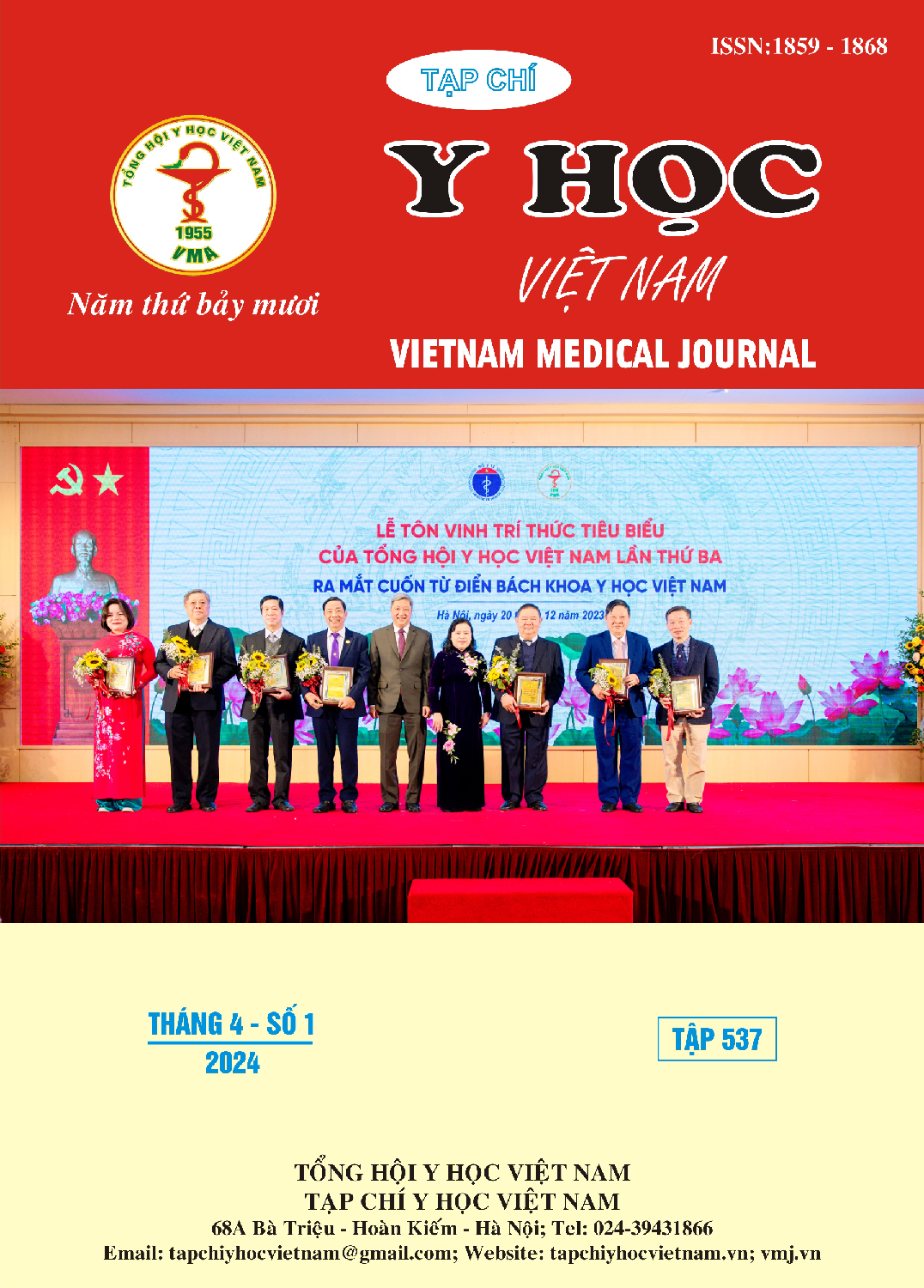ANTIBIOTIC RESISTANCE PATTERNS OF PSEUDOMONAS AERUGINOSA ISOLATED AT HAI PHONG INTERNATIONAL HOSPITAL IN 2022
Main Article Content
Abstract
Objective: Pseudomonas aeruginosa poses a significant challenge in treating various infections, with antimicrobial resistance exacerbating the complexity of successful treatment. Materials and methods: This cross-sectional study aimed to investigate the prevalence and antimicrobial resistance patterns of P. aeruginosa isolated at Hai Phong International General Hospital in 2022. Results: The result revealed that the prevalence of P. aeruginosa was 2.0% (87/4457), with the respiratory tract and urine being the most frequent source of isolates. The prevalence was higher in the >60 age group, <20 age group and those undergoing treatment in the General Surgery Department. Notably, P. aeruginosa showed the lowest resistance to piperacillin-tazobactam (11,5%), and the highest resistance to ciprofloxacin (35.6%) and levofloxacin (35.6%). As for other antibiotics, the resistance rates ranging from 15-28% were observed for antibiotics such as meropenem (27.6%), amikacin (26.4%), gentamicin (25.3%), imipenem (21.8%), tobramycin (19.5%), ceftazidime (17.2%), and cefepime (15.0%). Conclusions: The prevalence of P. aeruginosa displayed associations with age, specimen type, and hospital ward. Piperacillin-tazobactam, cefepime, ceftazidime and tobramycin are identified as suitable antibiotic choices for infections caused by P. aeruginosa.
Article Details
Keywords
Pseudomonas aeruginosa, antimicrobial resistance, Hai Phong International General Hospital
References
2. Helio S. Sader, et al (2019). Geographical and temporal variation in the frequency and antimicrobial susceptibility of bacteria isolated from patients hospitalized with bacterial pneumonia: results from 20 years of the SENTRY Antimicrobial Surveillance Program (1997-2016). J Antimicrob Chemother, 74: p. 1595–1606.
3. Bộ Y tế (2017). Hướng dẫn thực hành kỹ thuật xét nghiệm Vi sinh lâm, Nhà xuất bản y học, Hà Nội.
4. Nguyễn Thị Huyền và cộng sự (2023). Mức độ kháng kháng sinh của Pseudomonas aeruginosa phân lập được tạo Bệnh viện Trung Ương Thái Nguyên năm 2017-2021. Tạp chí Y học Việt Nam, tập 523, số 1, tr 115-119.
5. Trần Đình Bình và cộng sự (2021). So sánh tính đề kháng kháng sinh của một số loài vi khuẩn gây bệnh thường gặp tại Bệnh viện Trường Đại học Y Dược Huế năm 2018 và 2019. Tạp chí Y Dược Lâm sàng, tập 108, tr 149-157.
6. Lê Văn Cường, Dương Quang Hiệp (2020). Sự phân bố và tính kháng thuốc của trực khuẩn mủ xanh tại Bệnh viện Đa khoa tỉnh Thanh Hóa năm 2020, Tạp chí Y học Việt Nam, tập 511, số 1, tr 114-118.
7. Nguyễn Thị Đoan Trinh và cộng sự (2023). Đặc điểm gây bệnh và tính kháng kháng sinh của Pseudomonas aeruginosa tại Bệnh viện C Đà Nẵng. Tạp chí Y Dược học Cần Thơ, số 58, tr 159-166.
8. Lubna Farooq, et al (2019). Frequency and antibiogram of multi-drug resistant Pseudomonas aeruginosa in a Tertiary Care Hospital of Pakistan. Original Article, 35(6): p. 1622–1626.


